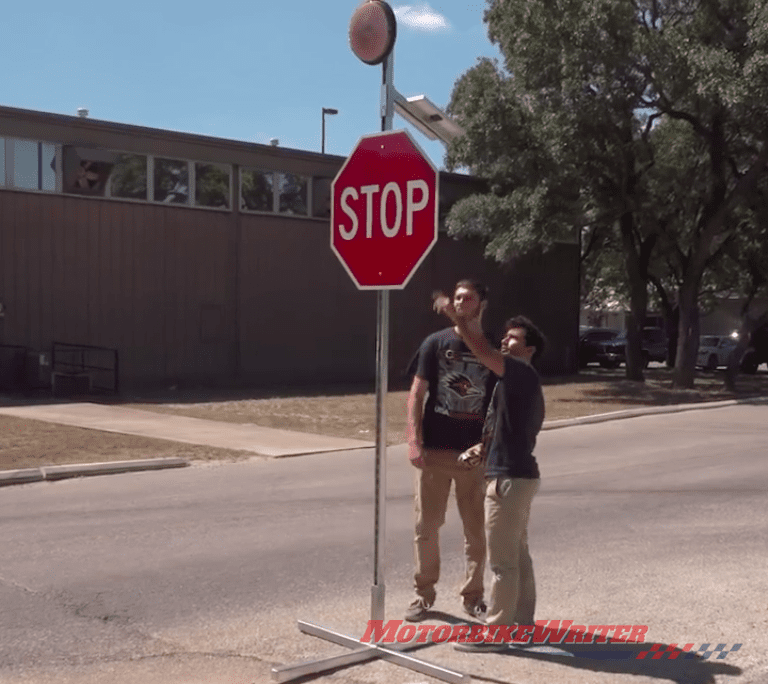Stop signs that may be difficult to see could be made safer with solar-powered smart stop signs that recognise an approaching vehicle and flash a warning light.
The signs, which are the brainchild of Texas University engineers, would help protect riders against vehicles running through these intersections.
Riders can be forgiven for having some scepticism that the smart sign sensors would detect motorcycles which often fail to trigger traffic lights.
However, the engineers say their system is more accurate than the magnetic inductor loops embedded in the ground at intersections to trigger a change in traffic lights.
Texas Uni is well aware of motorcyclist vulnerability.
They conducted a study that found SMIDSY (Sorry Mate, I don’t See You) crashes might be caused by drivers thinking smaller objects such as motorcycles are further away and a study that found drivers in partially automated cars did not scan as well for hazards such as motorcycles.
Safer sign
In the wake of the 2017 US Motorcycle Crash Causation Study that found 66.7% of crashes occurred at intersections, the Texas Uni engineers began looking for ways to make them safer.
Their low-cost solution uses a solar panel to generate the electricity to operate the sensors and the flashing warning light on top of existing signs.
They say it would cost only $US60-$100 (about $A84-$140).
The sensors pick up the vehicle’s “thermal signature” which means the hot engine and they claim it would detect a motorcycle.
However, they may not be particularly useful for cyclists and the riders and drivers of the coming wave of cooler-running electric vehicles.

They also only alert vehicles approaching the stop signs, not other vehicles on the crossroads, not do they alert of vehicles on the crossroads.
While there is no substitute for staying alert, anything that could make riding safer without costing a fortune should be welcomed, especially in rural areas where these regular stop signs may not be lit.
The solar power means they do not have to be connected to the grid, so they would be useful in rural and more remote areas.



